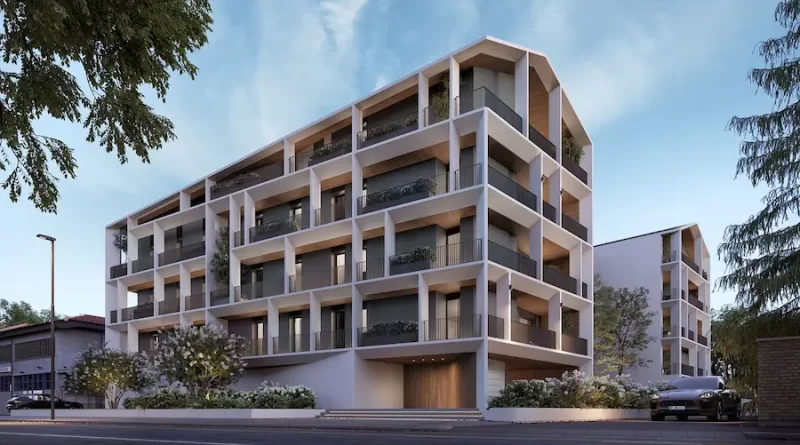What You Need to Know When Choosing a 3D Rendering Studio
3D rendering has become an invaluable tool across many industries today. With the ability to create highly realistic 3D models and environments, 3D rendering allows businesses to bring their ideas and products to life digitally. The applications of high-quality 3D rendering are immense.
Architecture and construction firms rely on 3D rendering to create detailed building plans and showcase property developments. Car manufacturers use 3D rendering in the design process to prototype and refine vehicles digitally. E-commerce companies leverage 3D rendering to vividly display products in their online stores. The utility of 3D rendering is also growing in fields like engineering, product design, media and entertainment, training and simulation, and more.
As 3D rendering becomes integral to workflows in these industries, there is a growing demand for specialized 3D rendering services. While beginners may be tempted by DIY solutions, professional 3D rendering studios have the expertise and technology to deliver truly photorealistic, high-quality 3D renderings that meet modern business standards.
When undertaking an important 3D rendering project, choosing the right studio is key to realizing your vision while also adhering to budget and time constraints. Look for a rendering provider with a strong 3d portfolio in your industry and the technical and creative capability to meet your specific project requirements. The right partner can elevate your 3D renderings and enable you to extract the maximum value.
The main points to keep in focus
When selecting a 3D rendering studio for your project, one of the most valuable reference points is assessing previous work showcased in their portfolio. A portfolio gives you invaluable insight into the diversity of a studio’s capabilities and their attention to detail—critical factors when commissioning 3D renders.
Insight into Capabilities:
Look for a range of project types similar to yours, whether it be architecture visualizations, product designs, animation sequences, VR environments or others. Diverse 3d portfolio pieces indicate the studio’s adaptability to deliver high-quality 3D renders across different industries, purposes and complexity levels.
Understanding Attention to Detail:
Pay attention to the level of detail in the sample projects. Intricate textures, realistic lighting, and life-like materials are signs of advanced skills. Portfolios lacking attention to materials, shadows, or background elements suggest limited technical abilities. For industries like manufacturing, verify that the studio includes CAD models in their capabilities, not just artistic presentations.
Assessing Relevance to Your Project:
Every project has its unique characteristics and challenges. By closely examining the 3d portfolio, look for direct experience in your niche industry or area of application. Relevant samples give you confidence that the studio understands the specific standards, design principles, and visual languages needed to meet your expectations. Architectural firms should seek portfolios with urban planning, home interiors or landscape designs fitting their work.
Matching Complexity Requirements
Compare the portfolio projects with your project’s scope of work. If your plans demand high-polygon 3D assets, complex animations or interactive VR, ensure the studio’s portfolio reflects advanced expertise in these domains. Understanding their demonstrated complexity levels prevents unwelcome surprises during actual production.
Client Satisfaction and Success Stories:
Beyond the visuals, a portfolio often includes brief descriptions or testimonials from previous clients. This provides insights into the client-studio relationship, communication effectiveness, and overall satisfaction. Success stories and positive feedback are indicators of a studio’s commitment to client needs and project success.
Quality Assurance and Processes
The true marker of a professional 3D rendering studio is the quality assurance and project management processes they employ for the consistent delivery of high-quality work. When selecting a vendor, insightful questions to ask would include:
What quality control measures do you have in place?
Reputable studios will have standardized QA protocols. This includes checking for model completeness, correct lighting and camera angles, accurate textures and materials, and the desired level of photorealism.
What is the client revisions and feedback process?
Build in expectations upfront around the number of modification rounds, expected turnaround times for changes, and the best ways for providing notes (markups, screenshots etc.) This prevents mismatched assumptions.
How do you ensure on-time delivery?
Understand schedule risk management procedures – whether they incentivize early deliveries, have contingency buffers, or provisions for more resources if falling behind milestones.
What software/hardware infrastructure do you employ?
Advanced tools, cloud rendering farms, and multi-software workflows indicate the capability to take on complex, resource-intensive projects. Legacy tools, dated hardware risk project execution.
Conclusion
Vetting a 3D rendering provider’s portfolio takes time but dramatically reduces project risks. The samples shine a light on their true abilities to match your quality, industry, and complexity needs. By keeping a keen focus on the portfolio, you equip yourself with a powerful tool for making an informed decision that aligns with your project goals and expectations.

